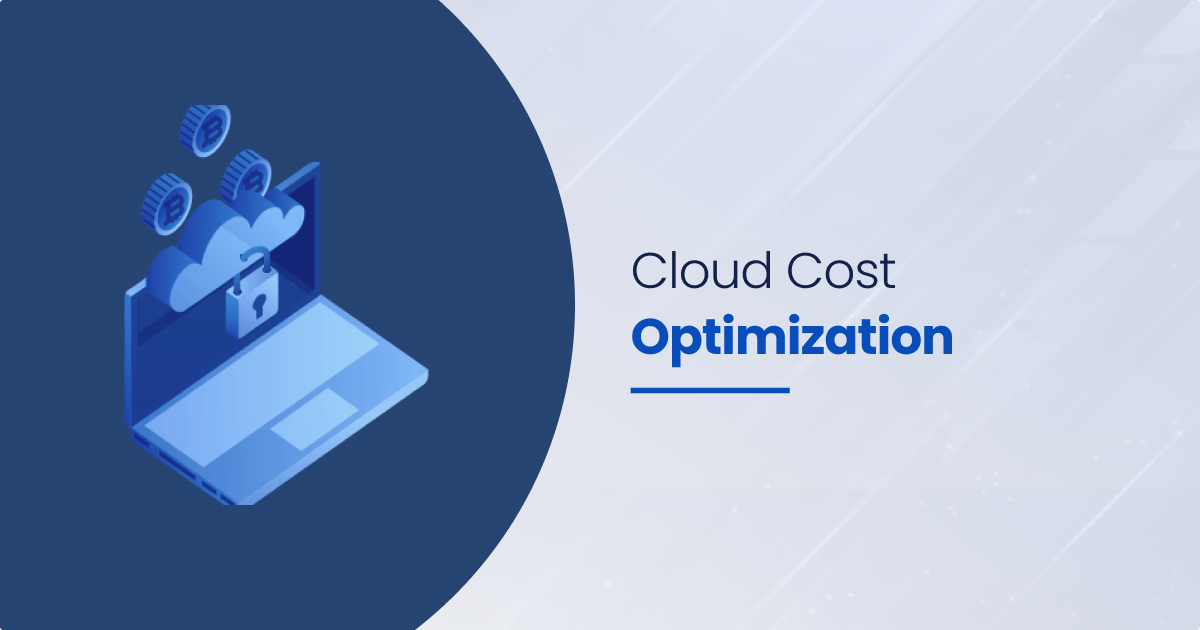

Cloud spending has become the second-largest IT expense for most organizations, with global cloud costs reaching $597 billion in 2024. Yet, studies consistently show that 30-35% of cloud spending is wasted on unused resources, over-provisioned services, and inefficient architectures. The good news? Companies implementing comprehensive cloud cost optimization strategies have reduced their cloud bills by an average of $2.3 million annually while improving performance and reliability.
The promise of cloud computing was simple: pay only for what you use. However, the reality is far more complex. Organizations struggle with cloud cost management due to the dynamic nature of cloud services, complex pricing models, and lack of visibility into resource utilization. The result is a phenomenon known as "cloud sprawl" – the uncontrolled proliferation of cloud resources that drain budgets without delivering proportional value.
Recent industry analysis reveals staggering statistics about cloud waste:
Global Cloud Waste Statistics:
The financial impact extends beyond direct costs. Poor cloud cost management affects cash flow, budget planning, and resource allocation for other critical business initiatives. Organizations often find themselves in reactive mode, scrambling to understand why their cloud bills have doubled or tripled without corresponding business growth.
Resource tagging forms the foundation of effective cloud cost management. Without proper tagging, organizations cannot track spending by department, project, or business unit. Successful companies implement standardized tagging policies that include cost center, environment, owner, and project identifiers.
Best Practice Implementation: Establish mandatory tagging policies with automated enforcement. Create tag hierarchies that align with your organizational structure and financial reporting requirements. Regularly audit and clean up untagged resources to maintain visibility.
One of the most common sources of cloud waste is over-provisioned compute resources. Organizations often select instance sizes based on peak capacity requirements rather than average utilization, resulting in significant waste during normal operations.
Optimization Approach: Conduct regular performance monitoring to identify under-utilized resources. Implement automated right-sizing recommendations and establish processes for regular capacity reviews. Consider using auto-scaling features to match resources with actual demand patterns.
Reserved instances and savings plans can provide 30-70% cost savings compared to on-demand pricing. However, many organizations either avoid these commitments due to complexity or make suboptimal purchasing decisions that don't align with actual usage patterns.
Strategic Implementation: Analyze historical usage patterns to identify stable workloads suitable for reserved capacity. Implement a mixed approach combining different reservation terms and coverage levels. Regularly review and optimize reservation portfolios as business needs evolve.
Data storage costs can quickly spiral out of control, especially when organizations store all data in high-performance, expensive storage tiers regardless of access patterns. Intelligent storage tiering can reduce storage costs by 40-60% without impacting application performance.
Storage Optimization Strategy: Implement automated lifecycle policies that move data to appropriate storage tiers based on access frequency. Regularly audit and delete obsolete data. Consider compression and deduplication technologies to reduce storage requirements.
Orphaned resources – such as unattached storage volumes, unused load balancers, and forgotten development environments – continue to generate costs long after they serve any business purpose. These resources often accumulate over time and can represent 15-25% of total cloud spending.
Resource Cleanup Process: Establish automated discovery processes to identify orphaned resources. Implement regular cleanup schedules with proper approval workflows. Create policies that automatically terminate resources after specified periods of inactivity.
Development, testing, and staging environments often run 24/7 despite being used only during business hours. Implementing automated scheduling can reduce costs for these environments by 60-75% without impacting productivity.
Scheduling Strategy: Identify non-production workloads suitable for scheduling. Implement automated start/stop policies based on business hours and usage patterns. Provide self-service capabilities for developers to override schedules when needed.
Data transfer costs, while often overlooked, can represent 10-20% of total cloud spending. Poor network architecture and inefficient data movement patterns contribute significantly to these costs.
Network Optimization Approach: Analyze data flow patterns to identify optimization opportunities. Implement content delivery networks and edge caching to reduce data transfer volumes. Optimize inter-region communication and consider data locality in application design.
FinOps represents a cultural shift toward collaborative cloud financial management. Organizations with mature FinOps practices achieve 23% better cost optimization results compared to those without structured financial operations.
FinOps Implementation: Create cross-functional teams including finance, operations, and engineering. Establish regular cost review meetings and accountability measures. Implement showback and chargeback mechanisms to increase cost awareness across teams.
Spot instances and preemptible resources offer significant cost savings (up to 90% off on-demand pricing) for fault-tolerant workloads. However, many organizations avoid these options due to perceived complexity or lack of understanding.
Spot Instance Strategy: Identify workloads suitable for interruption, such as batch processing, data analysis, and development environments. Implement proper handling for instance interruptions. Consider hybrid approaches combining spot and on-demand instances.
Organizations using multiple cloud providers face additional complexity in cost optimization. However, strategic multi-cloud approaches can leverage competitive pricing and avoid vendor lock-in while optimizing costs.
Multi-Cloud Cost Strategy: Compare pricing across providers for similar services. Implement workload placement strategies based on cost-effectiveness. Negotiate better pricing through competitive positioning and volume commitments.
Managed services, while providing operational benefits, can be expensive if not properly optimized. Database services, in particular, often represent significant cost optimization opportunities.
Database Optimization Approach: Right-size database instances based on actual performance requirements. Implement automated backup retention policies. Consider read replicas and caching strategies to reduce primary database load.
Preventive cost management through governance and approval workflows can be more effective than reactive optimization. Organizations with strong cost governance report 31% lower cloud waste compared to those without formal processes.
Governance Framework: Implement spending limits and approval workflows for resource provisioning. Establish cost thresholds that trigger automatic alerts and approvals. Create policies that prevent deployment of expensive resources without proper justification.
Modern cloud cost management tools provide sophisticated analytics and optimization recommendations. Organizations using advanced cost management platforms achieve 27% better optimization results compared to those relying on native cloud provider tools alone.
Tool Selection Criteria: Evaluate tools based on multi-cloud support, automation capabilities, and integration with existing workflows. Implement real-time cost monitoring and alerting. Utilize predictive analytics to forecast future spending and identify trends.
Containerized applications and serverless functions introduce new cost optimization challenges and opportunities. Traditional optimization approaches may not apply directly to these modern architectures.
Container and Serverless Optimization: Implement resource limits and requests for containerized applications. Optimize function memory allocation and execution time for serverless workloads. Consider reserved capacity options for predictable serverless usage.
Cloud cost optimization is not a one-time activity but requires ongoing attention and refinement. Organizations with continuous optimization processes maintain 40% lower cloud waste compared to those with ad-hoc approaches.
Continuous Optimization Framework: Establish regular optimization review cycles. Implement automated optimization recommendations and approvals. Create feedback loops to measure optimization effectiveness and adjust strategies accordingly.
Effective cloud cost optimization requires proper measurement and tracking. Key performance indicators should include:
Financial Metrics:
Operational Metrics:
Aggressive cost cutting can negatively impact application performance and user experience. Balance cost optimization with performance requirements and business objectives.
Cost optimization initiatives require support from engineering, finance, and business teams. Ensure proper communication and alignment on optimization goals and methods.
Application-level optimization often provides greater cost savings than infrastructure optimization alone. Consider architectural changes and application efficiency improvements.
Focus on total cost of ownership, including management overhead, training, and opportunity costs. Some optimization strategies may reduce direct costs while increasing operational complexity.
Organizations implementing comprehensive cloud cost optimization strategies report significant business benefits beyond direct cost savings:
Strategic Benefits:
Competitive Advantages:
Successful cloud cost optimization requires a structured approach that combines technology, processes, and cultural change. Start with quick wins to build momentum, then implement more sophisticated optimization strategies over time.
Implementation Roadmap: Begin with resource discovery and tagging to establish visibility. Implement automated cleanup processes for obvious waste. Establish governance frameworks and approval workflows. Deploy advanced analytics and optimization tools. Create continuous improvement processes and cultural change initiatives.
The journey to cloud cost optimization is ongoing, but the financial and operational benefits make it one of the most valuable investments organizations can make in their cloud strategy. With proper planning, tools, and expertise, any organization can achieve significant cost savings while improving cloud operations and business agility.